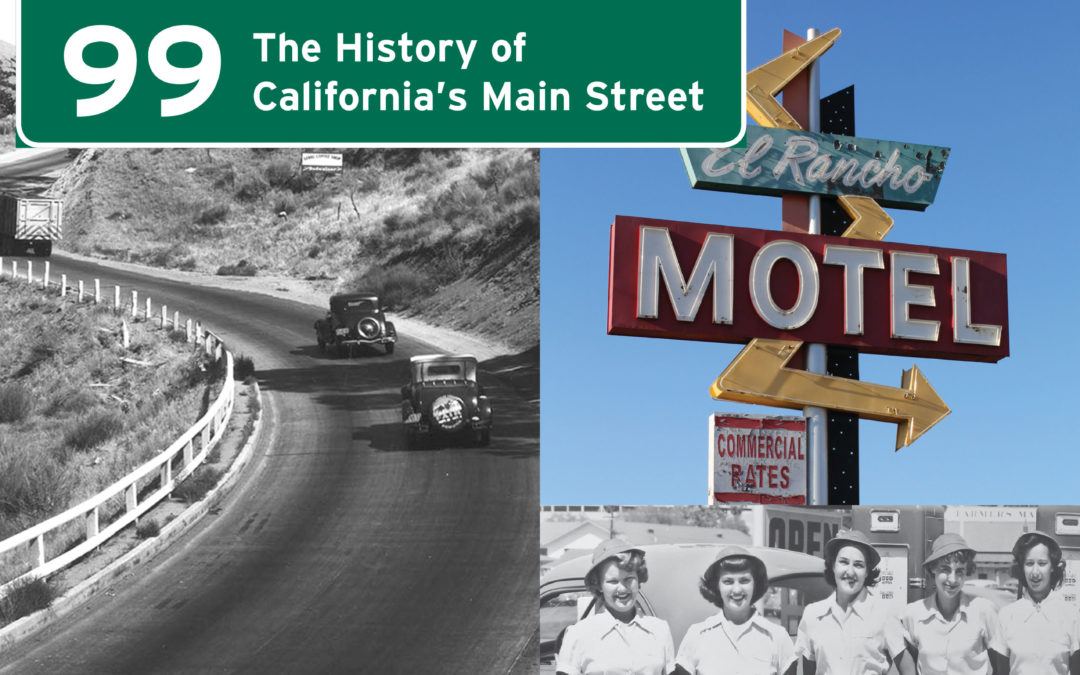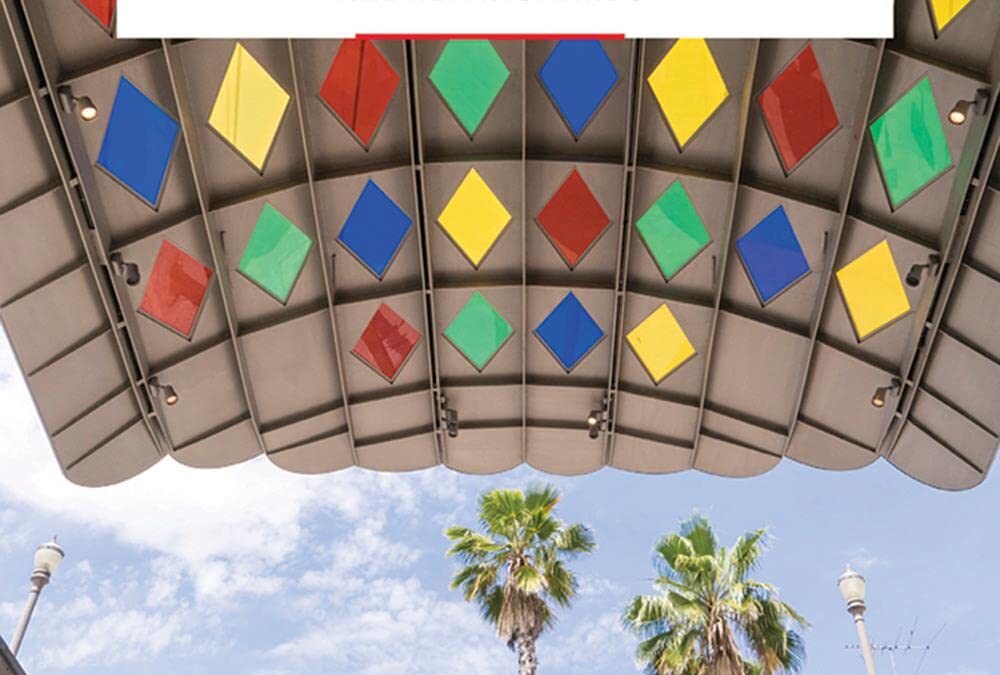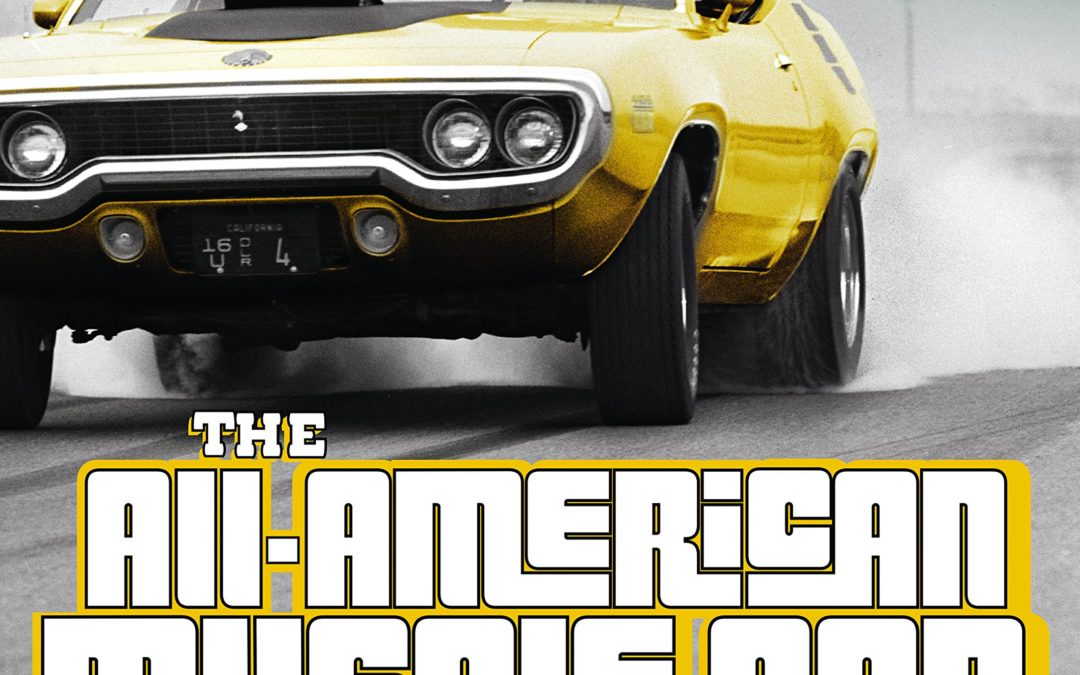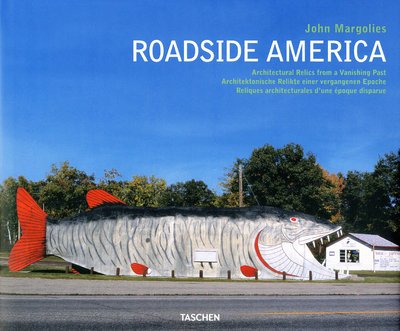
Before it was a modern freeway, California’s State Highway 99 was “the main street of California,” a simple two-lane road that passed through the downtowns of every city between the Mexican border and the Oregon state line. Highway 99: The History of California’s Main Street turns back the clock to those days when a narrow ribbon of asphalt tied the state’s communities together, with classic roadside attractions and plenty of fun along the way.
Highway 99 documents the birth, growth, and transformation of the highway; the gas stations, motels, restaurants, and attractions that flourished and declined by the roadside; and the communities, personalities, and historical events that made their mark on the highway. From the migrations of the Dust Bowl to the birth of the Bakersfield Sound to the foundation of America’s fast-food culture, the history of California has happened around Highway 99, and Highway 99: The History of California’s Main Street brilliantly depicts that history.

- An insider’s guide to Los Angeles’ hidden gems and lesser-known spots
- A recently updated edition in Luster’s successful and attractive series of city guides
- An inspirational and practical guide to the city’s most interesting places, buildings, restaurants, shops, museums, galleries, neighborhoods, gardens and cafes, into 100 lists of 5 secrets
- Photography by Giovanni Simeone
- Written by a true local, filled with independent advice, based on thorough research and the author’s personal opinions
Los Angeles has so much to offer, and this guide helps you to choose where to start when discovering this beautiful city. Where are the best farmers’ markets? Which street foods are not to be missed? What are the liveliest places to go dancing? What are some unlikely places to spot celebrities? Which art galleries are worth a visit? In The 500 Hidden Secrets of Los Angeles, Andrea Richards shares 500 must-know addresses in one of the coolest cities in the United States. It is an affectionate guide to the City of Angels that avoids the touristy places and points out the urban details you are likely to miss. From the best outdoor concert venues to the most beautiful country escapes, this guide is the perfect companion visitors who want to make the most of their stay and residents who want to get to know their city even better.

When John Z. DeLorean and his cadre of enthusiastic rule benders took it upon themselves to bolt Pontiac’s hottest engine into a mid-sized Tempest, disobeying orders from the top of General Motors food chain, they created something that should not have been, and will never be again: the muscle car. The resulting GTO spearheaded a new breed of performance car aimed at a new breed of buyer: the baby boom generation, tens of millions of young customers entering the market each year.
The All-American Muscle Car: The Rise, Fall and Resurrection of Detroit’s Greatest Performance Cars tells the story of these brutal performance machines through the words of muscle-car icons like Jim Wangers, the man who marketed DeLorean’s thuggish invention, Joe Oldham, a legendary automotive journalist who tested these cars when they first came off the production line, often via illegal street racing, and classic-car broker Colin Comer, who has been instrumental in restoring some of the most iconic (and valuable) muscle cars.
Top muscle car experts like Randy Leffingwell and David Newhardt tell other facets of the muscle-car story, like the pony-car wars between the Mustang, Camaro, ‘Cuda, and Challenger; the ultra-high performance dealer specials; and the rebirth of the modern muscle car. All told, this book provides the ultimate hands-on history of these most American of cars.
Soft Cover

The rise of the American diner is the most savory of phenomenons, where classic architecture, a friendly face behind the counter, and some mean pie all combined to make these little roadside stops a treasured part of history.
From the early days when Walter Scott brought his horse-drawn lunch wagons through the streets to the heyday of mass-produced chrome and neon diners in the 1950s, The American Diner offers a full blue-plate special of nostalgia for all those who loved the counter culture of these great eateries.
More than 250 historical and bright colorful photographs help remind us of life before fast food, and generous helpings of classic advertisements, cool collectibles, and architectural highlights also highlight the era.
Diners from coast to coast are featured, giving readers a trip to some of the best stainless-steel and neon diners that still dot the American roadways.

The native genius of America’s mid-era automobile culture
Before the advent of corporate communications and architectural uniformity, America’s built environment was a free-form landscape of individual expression. Signs, artifacts, and even buildings ranged from playful to eccentric, from deliciously cartoonish to quasi-psychedelic. Photographer John Margolies spent over three decades and drove more than 100,000 miles documenting these fascinating and endearingly artisanal examples of roadside advertising and fantasy structures, a fast-fading aspect of Americana.
This book brings together approximately 400 color photographs of Main Street signs, movie theaters, gas stations, fast food restaurants, motels, roadside attractions, miniature golf courses, dinosaurs, giant figures and animals, and fantasy coastal resorts. In an age when online shopping and mega-malls have reconfigured American consumerism, stripping away idiosyncrasy in favor of a bland homogeneity, Margolies’s elegiac 30-year survey reminds us of a more innocent unpredictable and colorful past.







